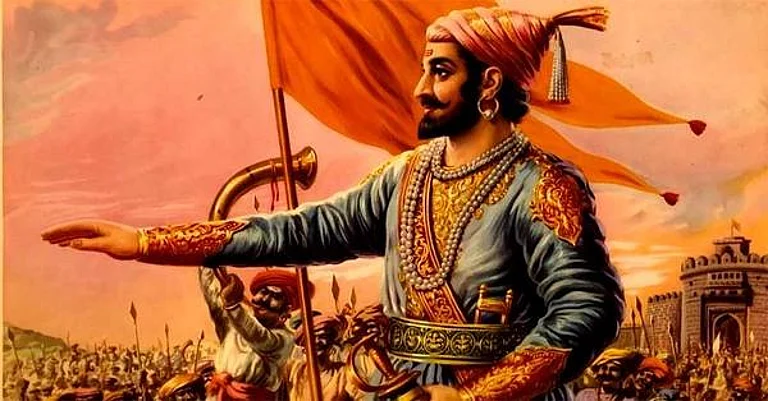Even as the news of the stabbing of Salman Rushdie broke some weeks ago, my mind’s eye reverted to the early 1990s, when a family friend handed a copy of Salman Rushdie’s The Satanic Verses. Going through it left me perplexed. This was no Sartre, Dostoevsky or Kundera, disabusing the reader of any moral simplicity he would have been prone to indulge. The sweep of the author’s imagination at display, weaving in magic realism to profane—in Rushdie’s view satire and provoke—the Prophet Muhammad, the nascent Islamic community he founded down to the members of his household and the Quran itself—left many of the readers shocked.
Going through its content, I wasn’t surprised by the levels of protest this book had provoked in the Muslim community around the world after a religious edict passed by Ayatollah Khomeini veritably became a death sentence for Rushdie. The book and the controversy irreversibly altered the relationship between wider society and its Muslim components in many countries. New words entered the lexicon along with the debates on freedom of speech, radicalisation and multiculturalism.
Rushdie was previously feted as a left-liberal shining star of the “non-English writers in English” category, someone who didn’t suffer a “Brown Sahib” complex, a la Naipaul. He illustrated colonial depredations—his Midnight’s Children would become the gold standard of postcolonial writing—lending voice to characters of marginalised natives, the subalterns. His writing style and themes enriched English literature.
How did he abruptly morph into a purveyor of socio-political conflict and a catalyst for Muslim radicalisation? Whilst writing the Verses, did he have any idea of the waters he was wading into, or was he too successful to afford living a distance from reality.
Did Rushdie even countenance what he was pitted against? The sheer entropic space created by the meld of historical suspicions, and the dissonance of colonial angst between the West and the Orient. It was this entropic space that would ultimately both consume and recreate him.
But over the years after, one could figure out that the controversy was much more than western liberal milieu turning Rushdie into a caricature for freedom of expression or hurt religious sensibilities of Muslims at play.
The fear that the edict passed by the Ayatollah, the overarching Shiite Muslim papal figure and Iranian supreme leader, whose wrath Rushdie had incurred, was real. Khomeini, a deeply religious man conditioned on anti-colonial sentiment, was loath to see the book as anything but a renewed anti-Islamic-invective created by the West as part of a modern crusade of belittling Islam and its Prophet. In their view, this time instead of Dante, it was a shill with a Muslim name.
Rushdie’s attempts to fob off the criticism of the book as running themes of psychosis and metamorphosis would not cut any ice there. Somewhere it seemed Rushdie had failed to understand the times he lived in. Post-fatwa, his persona—until then a beacon for Asian mainstreaming in the UK—would propel British Muslims into an identitarian assertion of a confessional variety whose ramifications would rattle England in particular and the Western world in general.
The 1980s were a tumultuous decade. Banking on traditional Shiite political ideas bred in the crucible of millenarian messianism, Khomeini expounded the concept of velāyat-e faqīh; an index sui religious authority vested with power of both overview and veto on a secularly inspired democratic legislature and its legists. Retaining an air of martyrdom, apostolic imprimatur and revolutionary zeal, he proclaimed violent opposition to the West as an appropriate retort to what he decried as Western subjugation of the Muslim world’s polity and resources through a combination of proxies, subterfuge and subversion. The 1979 US embassy takeover by Shiite militants can be considered a signal event in this contestation. The Iranian obstinacy in negotiations ultimately saw incumbent US President Jimmy Carter lose his re-election.
The 444 days of captivity of the diplomatic staff, with a failed rescue attempt added on to it, would become the symbol of superpower humiliation. A concerted and sometimes acerbic polemical campaign against Iran conducted through Western mass media and in print by individuals ensconced within Western security establishments, academics with strong neo-Orientalist persuasion, and politicians, would increasingly find sustenance in the turn of events.
The imagery of Muslim “fanatics” hell bent on suicidal missions lurking around the Middle Eastern shores from Iran to Lebanon, and propelled by revanchist ideas of political primacy, had firmly imbricated itself into the Western perception of the Muslim world in general and the Islamic faith in particular.
This campaign also compelled public intellectuals like Edward Said to comment incisively on the vilification campaigns and point out their antecedents and hazards.
In the Third World, the effect of these events was totally different. Khomeini’s apostolate instilled a militant determination in the Shiite creed, emancipating the community beyond ethnic realities and national boundaries. In the eyes of the Twelver Shiite sect, Khomeini’s ascension with his aura of personal piety and pertinacity was perceived as the prelude to the appearance of the awaited Imam Mahdi, the Islamic messianic figure of End Times, signifying temporal-spiritual convergence in political primacy.

As the slogans reverberating on the streets of Teheran at that time point out, Khomeini’s rise and ideas didn’t signify catastrophic sacerdotal annexation of the power corridors of Iran, as it did to the western world, but was viewed as more of a historical affirmation: The first step towards the fulfilment of the ancient prophecy. A sign of divine transcendence manifesting itself to reclaim the Muslim world.
It also led to creation of new frontlines where Khomeini’s understanding of statecraft: an active and violent militantism challenging the inordinate hold of the West on the Muslim world, widely perceived by Khomeini to be the root cause of denial of justice in the latter environs—would be undertaken.
To this determination, istishhad, a radicalised and a very Shiite ideation of martyrdom, was marsupialised and let loose on the Iraq battlefronts and Lebanon, as its first steps.
In Lebanon, the 1982 Israeli invasion was a spur for Iran to fully back the Levantine Shiites—carrying an avowed confessional allegiance to the Ayatollah’s world view and Islamic Revolutionary Guard Corps (IRGC) muscle—who relentlessly attacked and assailed US, French and Israeli targets. These high-profile attacks in Beirut in 1983 include the infamous suicide bombing of US Marines, French paratrooper barracks and the US embassy. They claimed hundreds of lives, forcing the Reagan administration to end its military ‘peacekeeping’ intervention in Lebanon and speed up the pace of Israeli withdrawal.
This ideation morphing into violent suicide attacks would, in turn, be vicariously imbibed by Sunni Islamists, hastening a violent apotheosis to the fore on 9/11.
But in rest of the Muslim world just emerging from the colonial era in the early 1980s, Khomeini’s ideas inspired new volunteers and new causes; causing consternations and sending ripples across political dispensations across the Muslim world and beyond. A new religious militancy sprouted all over Middle East and South Asia. These militants, carrying a certain charged pilgrim’s zeal and their very striking ideas of creating a similar Utopian commune.
The dream inspired by Islamist ideologues—who now looked at Shiite Iran with awe—wanted replication of the commune with its own rules. They intended creating a new society, formed in a crucible of a perpetual war, which in their view would maintain both the crux of goodwill and sense of direction amongst themselves. Alibis were plenty like their recriminations, coupled to their will and optimism obviating thoughtful forays which could result in swerving from the ideas were to be taken head on and obviated by perpetuating new cycles of violence.
The pervasive cynicism of existing power structures was a strange mix of adrenaline injected into their spines with religious injunctions to cover them. Political absolutism and religious ritualism provided relief of belonging, helping them to confront the imperfections of this world, its inequities and the constant gasps of change.

This political creed, inspired by the past but borne of disenfranchisement, dreamt up a new City of God by preaching it, and cardinal soldiers who would fruition it.
By 1988, the Iranian establishment was embroiled in a vicious conflict with the US in the Persian Gulf, where the American forces and the IRGC had been battling it out. Iranian attempts to mine shipping lanes the previous year had met with equal ferocity by the Americans. In the Mediterranean, the campaign against Israel through Hezbollah, empowered Lebanese Shiites, heavily armed and subsidised by Iran, were now more assertive politically. In time their power would relegate the country’s previous ruling class—the Christians—with their powerful Phalangist militias and other sects into obscurity.
Confronting its perceived enemies on battlefields of its choice was one thing, but at the same time, given Imam Khomeini’s profile, the Iranian establishment always sought to seek moral leadership of the Muslim world. Here, it would have to confront another long-time US ally Saudi Arabia. Hundreds of people had died in confrontations between Iranian pilgrims and Saudi securitymen during the Hajj pilgrimage in 1987.
The fatwa came when the Red Army was completing its humiliating retreat from Afghanistan. Iran’s chief rival Saudi Arabia had bankrolled the war effort with the US, and was on the cusp of taking credit for the great Muslim victory against godless communists, the fatwa came in effectively depriving the former of any celebration or claim of leadership.
Rushdie thus effectively found himself in the wrong end of the Iranian maws. Whilst the Saudi religious scholars contended that Rushdie be given a chance to repent, the fatwa meant that the Iranians would extend him no quarter, or accept any apologies from him.
By the time Hadi Matar, a Lebanese-American of Shiite confession, had plunged his knife into the aging writer at a New York literary function, the Iranian State’s response was tepid, with none of the extreme reactions evoked in the Khomeini days.
The Iranian State, in the three decades since, has successfully congealed a Shiite arc and morphed into an over-arching power in the wake of violent neo-imperial incursions into these environs. It had found a working relationship with the US after 9/11 in both Iraq and Afghanistan. Rebuffed but left without checks after the fall of Saddam Hussein and the Taliban, its ruling hierocracy’s ambitions have grown.
Iran’s politico-military machinations, till recently run by its Legatus Augusti Qasem Soleimani—head of the IRGC—made this Shia revival project a reality. Their politics now carried none of the pretence or claim of moral leadership of the whole Muslim world.
Iranian strategic interests and revanchist sectarian tendencies fuelled violent cycles of attack and revenge, by both Sunni nationalist insurgency and Shiite vigilantes, to renew deep-seated antagonisms and hatred that would immolate the Levant after destroying modern Mesopotamia.
In its newer world self-image, for the Iranian State, the fate of Rushdie the individual was irrelevant. Their purpose had been served in 1989 by the book and the fatwa. This effectively radicalised a large swathe of the world’s Muslim populace and set the Muslim diaspora in Europe and elsewhere on the path of alienation from the mainstream. The Bosnian war would be the last nail in the mainstreaming coffin.
In the literary domains, British writer Hanif Kureishi, Rushdie’s friend, expressed his views in the Spectator magazine: “The controversy and the fatwa altered everything. The very notion of writing. Writers had to think about what they were writing in a way they never had to before. Free speech became an issue as it had not been before. The attacks on Rushdie showed that words can be dangerous.”
(This appeared in the print edition as "Joseph Anton on the Persian Shore")
(Views expressed are personal)
Dr Khalid Mir Is a surgeon who has authored Jaffna Street: Tales of Life, Death, Betrayal, and Survival in Kashmir. This essay is drawn from his next book, Looking For Hanine: An Arabian Odyssey






















